Tennyson picked up three assists in 19 games with the Devils earlier in the season and will replace Frederik Claesson in the lineup on Tuesday. He has added nine points (1G / 8A) in 25 AHL games this year.
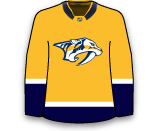
Tennyson picked up three assists in 19 games with the Devils earlier in the season and will replace Frederik Claesson in the lineup on Tuesday. He has added nine points (1G / 8A) in 25 AHL games this year.

With Petr Mrazek set to return from a concussion on Tuesday, Nedeljkovic will be the goalie to go to Charlotte and get some playing time. The 24-year-old netminder went 1-2-1 with a 3.05 GAA and .887 SV% during his call-up and returns to the AHL where he is 15-10-2 with a 2.51 GAA and .905 SV%.

Geekie was a third-round pick (No.67 overall) in 2017 and leads all active Checkers with 22 goals and is third with 42 points in 55 AHL games this season. Geekie is expected to replace Ryan Dzingel (upper-body) and skate on the fourth line with Nino Niederreiter and Jordan Martinook in his NHL debut.

Guhle has performed well with the Ducks this season, scoring four goals with four assists (eight points) in 30 games while playing 17:04 ATOI. His return to the AHL suggests that Josh Manson will return to the Ducks blueline on Sunday.
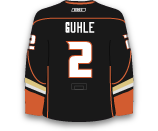
Kuokkanen was the prospect Devils got back from Carolina in the Sami Vatanen trade. Since joining Binghamton, Kuokkanen has scored three goals with three assists (six points) in four games. Overall, that gives him 15 goals and 33 assists (48 points) in 56 AHL games this year. He has not registered a point in 11 career games.
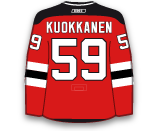
Knyzhov is in his first year in North America and he has picked up five points (1G / 4A) in 33 games on the Barracuda blueline. He could make his NHL debut on Saturday with Jacob Middleton out and the Sharks with no concrete No.6 defenseman.

Gilmour has been summoned from the AHL likely to serve as the seventh defenseman with Lawrence Pilut unlikely to be available on Saturday. Gilmour has six goals and seven assists (13 points) in 36 AHL games this season.

Gilbert comes up after Lucas Carlsson took a puck to the head on Thursday night. Gilbert has split his 2020 campaign between the AHL and NHL, collecting three points (1G / 2A) in his 20 games with the Blackhawks.

Boqvist played with the Devils on Tuesday but will go to the AHL to help Binghamton make the playoffs. He has eight points (5G / 3A) in 15 AHL games this season.

Jacobs played in the last two games with the Devils but will go to the AHL to help Binghamton make the playoffs. He has 14 points (5G / 9A) in 50 AHL games this season.

Jaros played in the last seven games with the Senators but will swap spots with Christian Wolanin and return to Belleville. He has two goals and 13 assists (15 points) in 32 AHL games this year.

Wolanin missed the first four and a half months of the season but has picked up one goal in nine games with Belleville since returning from injury. Wolanin will replace Christian Jaros on the roster. He had 12 points (4G / 8A) in 30 NHL games last year.

Dries leads the Eagles with 21 goals while adding 14 assists (35 points) in 49 AHL games this season. He has six points (3G / 3A) in 43 career NHL games.

Connauton has appeared in just one NHL game this season but has played terrific in the AHL, ranking second among Eagles defensemen with 27 points (5G / 22A) in 38 games.

Kaut played in eight straight NHL games, scoring two goals on 11 shots (18.2 SH%) and one assist in 10:03 ATOI. He returns to the AHL, where he had 16 points (5G / 11A) in 31 games before being called up.
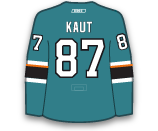
Vejdemo has picked up 19 points (9G / 10A) in 46 AHL games this season but has no points in his first four career NHL games. With Tomas Tatar dealing with an upper-body injury, Vejdemo returns to the AHL where he will likely slot in on the fourth line on Thursday.

Hickey has only appeared in 14 hockey games this season, all with Bridgeport, and has picked up three assists. With Johnny Boychuk requiring 90 stitches after taking a skate to the face on Tuesday, it seems like Hickey could make his season debut on Thursday. He had four assists in 40 NHL games last year.
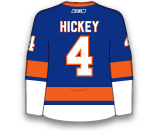
Farabee has scored three goals with one assist in five AHL games since being sent down on February 24th. With James van Riemsdyk suffering a broken hand last night, Farabee is expected to jump right back into the Flyers lineup on Thursday. He has picked up 20 points (7G / 13A) in 49 games with Philadelphia this season.


Driedger has been sidelined by a lower-body injury since mid-January and was recently sent to Springfield on a conditioning stint. He struggled in his only AHL game, allowing five goals on 33 shots in a 6-3 loss to Bridgeport. He could be in-line to start Thursday with Sergei Bobrovsky (lower-body) listed as day-to-day.
